Wheel & Cross is proud to publish this monthly Almanac at the start of each month. It was created to observe and understand the cycle of seasons as they occur in the Australian Capital Region, through the lens of European agricultural knowledge and publicly available and openly shared knowledge of the traditional custodians of ‘Capital Country’, the Ngunnawal.
I acknowledge that the Ngambri people also claim custodianship of these lands. Unfortunately, I do not have any knowledge about Ngambri cultural information regarding language, connection to Country or seasonal customs. This means I am not able to share anything relating to Ngambri culture but I am always keen to learn.
I pay my respects to all First Nations Elders, past and present and to all First Nations peoples from around Australia and the Torres Strait Islands who are the proud custodians of this Country we all love.
Contents
Ngunnawal season
Weather and Climate
October weather summary
Long-range forecast
November forecast
Natural emergencies
Star Gazing and Star Lore
Moon phases
Visible planets, meteors and solar movements
Western and First Nations ‘star lore’
Nature and Environment
Environmental weeds
Native flora
Native fauna
In Season - seasonal crops, flowers and food
Ngunnawal Season
Sources: Tyronne Bell, Ngunnawal Elder, Thunderstone Cultural Aboriginal Services
The end of October and start of November marks the Ngunnawal season of Winyuwangga. Native edible grass, rush and wattle seeds are abundant. This is the most dangerous time of year for wildfires due to high temperatures, dry weather and dried plant life. Many tribes from around the region travelled to Australia’s Alps to avoid the heat, gather together and feast on protein and fat-rich Bogong moths.
Weather and Climate
Sources: Australian Bureau of Meteorology, Australian Meteorology, Timeanddate.com, Weather Spark
Weather Summary - October
October maximum temperatures were slightly warmer than average, while minimum temperatures were slightly colder than average. Rainfall was lower than average for the month.
Max Temp - The average maximum temperature for October this year was 22.2°C, slightly warmer than the long term average of 21.3°C and below the hottest October on record of 24.2°C in 2006. The highest maximum temperature was recorded on October 30 at 28.3°C, which was 4.4°C under the warmest maximum October temperature on record of 32.7°C on 10 October 1946.
Min Temp - The average minimum temperature for October this year was 5.9°C, slightly lower than the long term average of 6.2°C and warmer than the coldest October on record of 3.4°C in 2012. The lowest minimum temperature for the month was recorded on 26 October at -1.3°C, which was 2.1°C warmer than the coldest-ever temperature of -3.4°C on 18 October 2013.
Rainfall - It rained on 5 days this month with a total of 18.8mm, well below the October average of 9.4 days and 55.9mm of rain. The wettest October on record was in 2006 with 161.0mm of rain.
Wind - As usual for October, wind speed slowed and evened out. The predominantly westerly winds began their change to easterly in the afternoons.
Long-Range Forecast
The Indian Ocean Dipole (IOD) and the El Niño–Southern Oscillation (ENSO) remain neutral but the Sea Surface Temperatures (SST) around Australia are warmer than average and these warmer than average temperature anomalies will increase through to April 2025. This will result in increased moisture in the atmosphere, above average humidity and rainfall, increased severe weather/ storm activity and increased temperatures.
Increasing sea temperatures on Australia’s east coast have caused the East Australian Current to extend further south where the Tasman Sea is warming at twice the global average. It is not known how this will specifically impact weather patterns but the Australian Bureau of Meteorology is predicting one of the hottest summers on record, with extreme weather events increasing.
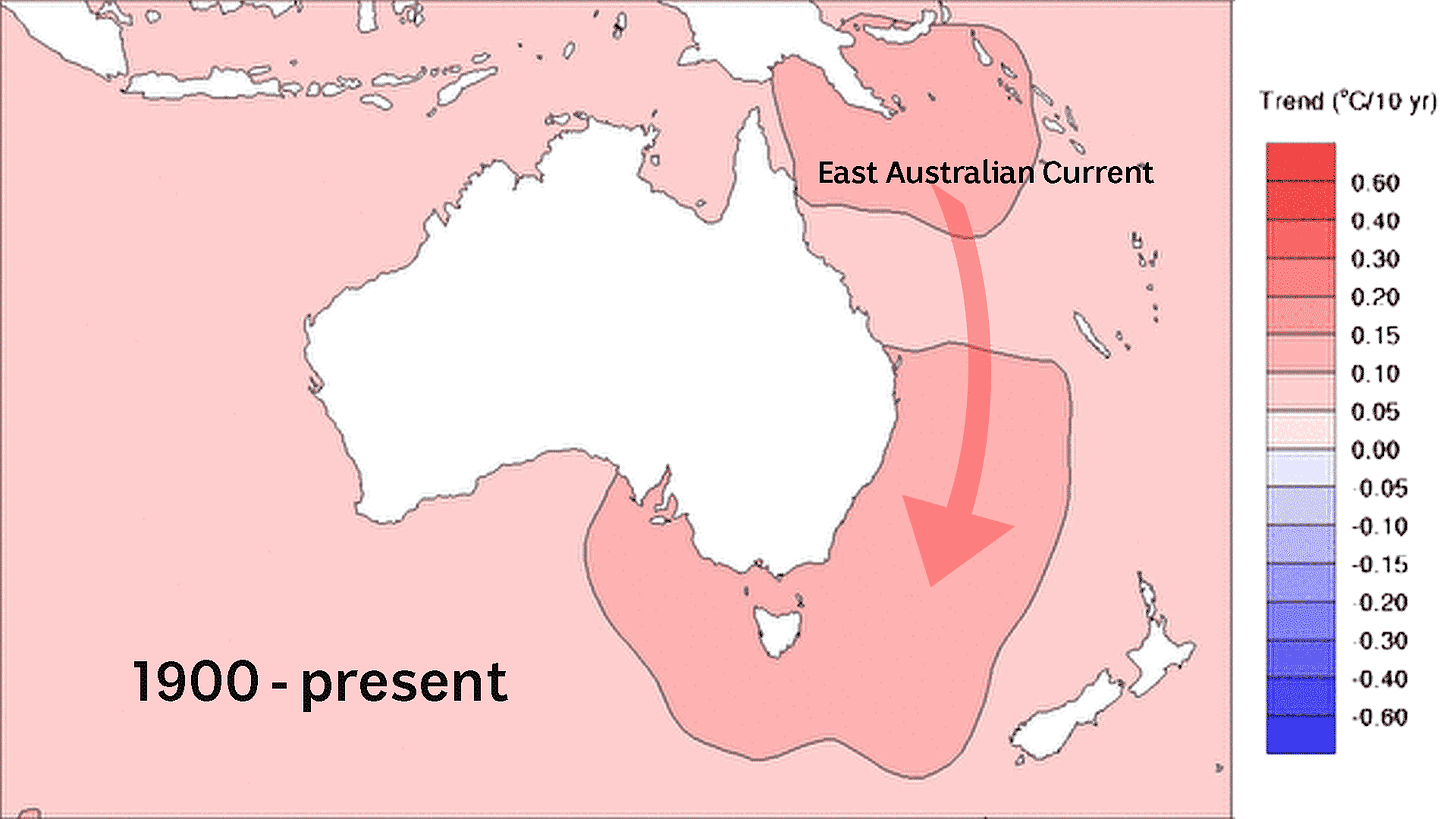
November Forecast
Most of the north and east of Australia will experience above average rainfall in November including the Australian Capital Region. There will be an increased chance for warmer than average days, unusually high maximum temperatures (although less severe than in other parts of Australia) and significantly warmer than average nights.
Wind speed continues to reduce, down to an average of 10km/hr. The predominant westerly winds will change to easterlies in the afternoons. This usually brings cooler afternoon and evening temperatures, however, the increased ocean temperature and shifting currants may mean that the easterly does not bring the usual cool change.
In the opening weeks of November, a large pool of hot air is spreading from the north west of the country, moving south and east. It brings substantially higher temperatures that could exceed 40°C in parts of NSW by the end of next week. Be prepared for hot days and nights.
Averages for the Australian Capital Region in November are:
Maximum Temperature 24°C
Minimum Temperature 10°C
Rainfall 55.9mm
Winds 10km/hr
The danger of frost has now passed but were are now in the bush fire danger period.
Natural Emergencies - Fires, Floods, Heatwaves and Storms
Every two years the Australian Bureau of Meteorology and the CSIRO issue a joint report called State of the Climate. The 2024 report has just been released and has found that Australia has already:
Warmed by more than 1.51 degrees and experienced more extreme heat events on both land and oceans, longer fire seasons, more intense heavy rainfall and sea level rise… with eight of the nine warmest years on record occurring since 2013. Record low sea ice and record high ocean temperatures… make weather forecasting increasingly difficult to predict. ABC News
Extreme heat has caused more deaths in Australia than any other natural hazard and has major impacts on nature and the environment. Ensure that plans are in place to survive extreme heat events including redundancies for power outages as extreme heat can impact the electricity grid.
The statutory Bush Fire Danger Period for Rural Fire Districts began on 1 October. Fire Permits are required throughout most of NSW including the Goulburn-Mulwaree, Queanbeyan-Palerang, Snowy Monaro and Yass Valley regions of NSW, and in the Australian Capital Territory. Make sure you understand your fire risk, prepare your homes and properties for the fire season, have a bush fire survival plan and pay attention to Fire Danger Ratings for your area. Visit the NSW Rural Fire Service (NSW RFS) and ACT Emergency Services Agency (ACT ESA) websites for more information.
Increased storm activity and higher than average rainfall is likely to lead to increased chances of local flooding and storm damage. Prepare your homes for the storm season, prepare flood, and storm survival plans, and pay attention to severe weather warnings. Visit the NSW State Emergency Service (NSW SES) website for more information.
The Australian Institute for Disaster Resilience and the National Emergency Management Agency have developed the Australian Warning System to “provide information and warnings during emergencies like bushfire, flood, storm, extreme heat and severe weather.” There are three warning levels:
Advice (Yellow) - An incident has started. There is no immediate danger. Stay up to date in case the situation changes.
Watch and Act (Orange) - There is a heightened level of threat. Conditions are changing and you need to start taking action now to protect you and your family.
Emergency Warning (Red) - An Emergency Warning is the highest level of warning. You may be in danger and need to take action immediately. Any delay now puts your life at risk.
The NSW Hazards Near Me app provides access to current information and notifications from emergency services about local emergencies. Be sure to download it and set your ‘Watch Zones’.
Star Gazing and Star Lore
Sources: Weather Spark, The Lighthouse - Macquarie University, SciTech, Australian Indigenous Astronomy
Lunar Phases
The last of 4 consecutive super moons will occur this month.
Friday, 1st - New Moon
Saturday, 9th - First Quarter Moon (waxing) - Rise 12:00pm ESE, Zenith 7:15pm N
Saturday, 16th - SUPER FULL MOON (Planting or Garlic Moon)* - Rise 8:28pm ENE, Zenith 12:21am N
Saturday, 23rd - Last Quarter Moon (waning) - Rise 1:38am ENE, Zenith 7:04am N
*The names of the full moons provided here generally correspond with names used in old English agricultural calendars and similar American Almanacs, although they have been re-arranged according to their appropriate season in the southern hemisphere. See Full Moon Names for the Southern Hemisphere for more information.
Stars, Planets and Meteors
Stars appear to twinkle as their light comes from active suns in distant solar systems. Planets shine steadily in the night sky rather than twinkle as they reflect the sun’s light.
MERCURY - will be visible in the western sky after sunset throughout November.
VENUS (also known as ‘The Evening Star’) - continues to rise higher and shine brightly, dominating the western sky.
MARS - can be observed shining with a red hue and rising in the north east at around midnight.
JUPITER - the largest planet in our solar system is approaching opposition to the sun and will be shining brightly, rising just after sunset in the east and staying visible all night.
SATURN - continues to rise in the north western sky just after sunset and will set in the north east close to midnight. It is currently tilted towards Earth and its rings and largest moon, Titan, are viewable with a telescope. By March 2025, its thin rings will seem to disappear as its tilt straightens relative to Earth.
METEORS - The Leonids meteor shower peaks on November 17, emanating from the constellation of Leo in the north eastern sky. The best time to see them is before sunrise on November 17 and 18, although the Waning Gibbous Moon will reduce their visibility. Look for the faint red dot of Mars in the northeastern sky to get your bearings. You might expect to see a dozen or so meteors per hour in good conditions.
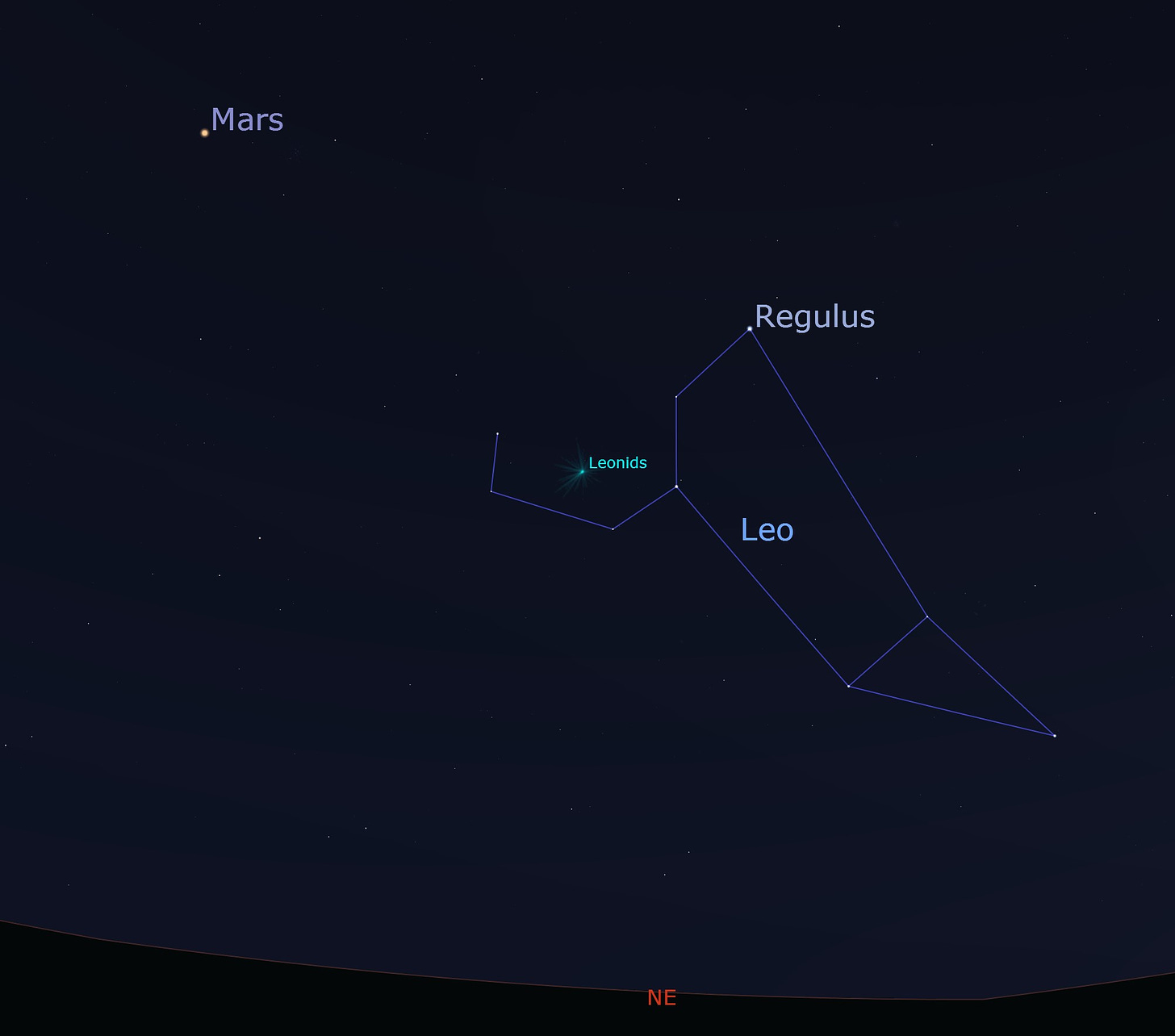
Constellations
Scorpius
This constellation was known as Mulgirtab (the ‘Scorpion’) by the Babylonians and later as Scorpius by the Ancient Greeks. The nearby constellation of Libra was considered to be the Scorpion’s claws by both the Babylonians and Greeks. There are several ancient Greek myths about Scorpius, often associated with Orion.
In one version, Orion boasted about his hunting prowess to the goddesses Artemis and Leto (Artemis’ mother) and bragged that he would kill every animal on earth. The two goddesses sent a scorpion to kill Orion. Orion and the Scorpion fought and killed each other. Zeus raised both Orion and the scorpion at opposite ends of the sky as reminder for mortals to curb their excessive pride.
In another version, Orion tried to earn the favour of Artemis by saying she was better than her twin brother Apollo. Apollo then sent the Scorpion to kill Orion and they killed each other. Artemis, saddened by Orion’s death, asked Zeus to raise Orion to the sky. This Zeus did but he also raised the Scorpion to the sky. Now, every winter Orion hunts in the sky but flees when the Scorpion comes in the summer.
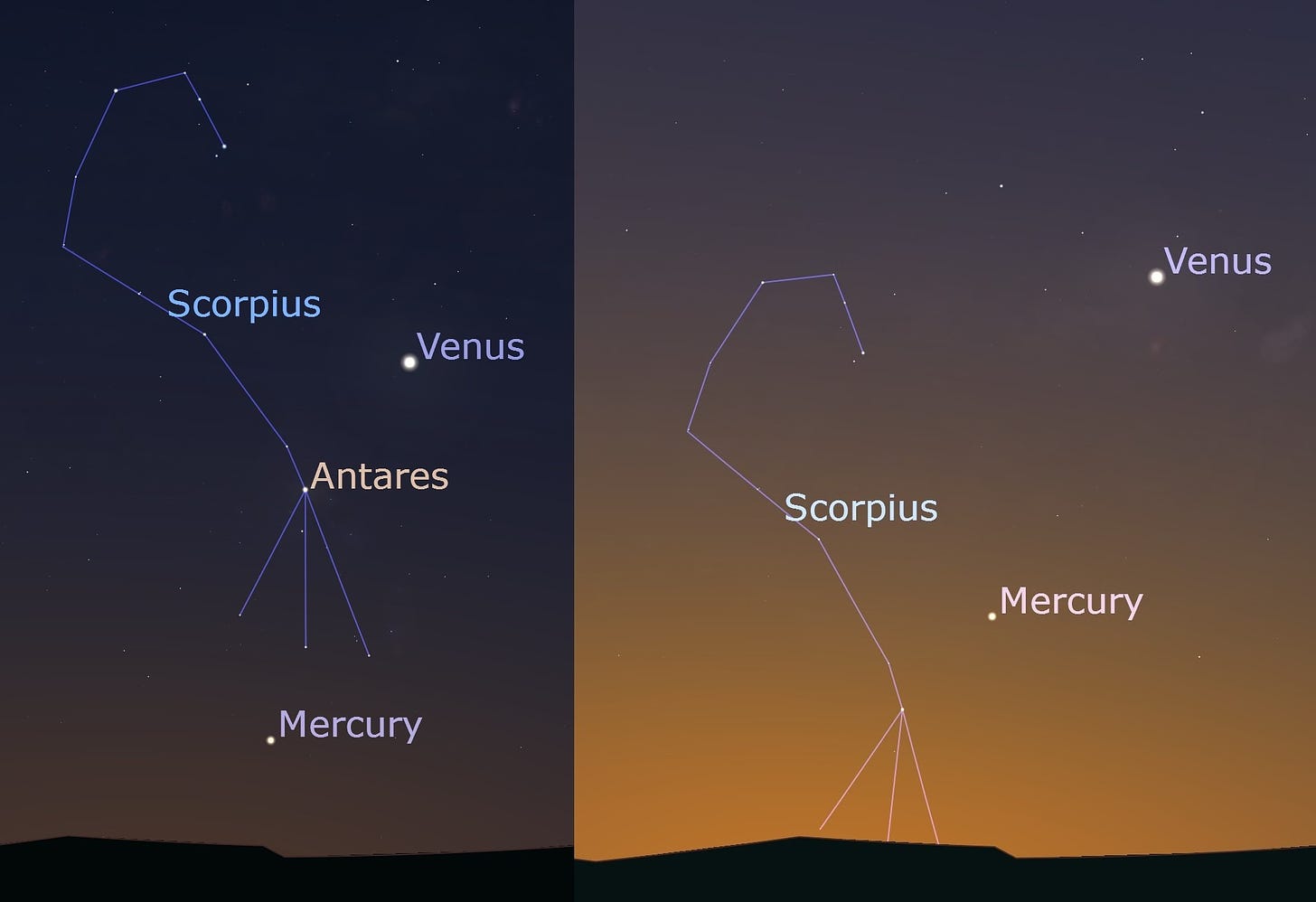
Australian First Nations have their own mythologies about the constellation Scorpius, many align with geological patterns found on Country, like this story known by the Kamilaroi and Euahlayi people of north west NSW:
The constellation Scorpius, which crosses the Milky Way, and looks like a scorpion, is known by the Kamilaroi and Euahlayi not so much for the star pattern, as for the dark spaces around it. While it is very difficult to see them, there are two or three dust patches in the vicinity of the tail and the claws, which someone with very good eyes and a dark sky might see. These are actually holes which the spirit of the whirlwind, Wilbaarr, uses to come to Earth in September, when whirlwinds are common.
These whirlwinds which Australians call “willy willys” (from the Euahlayi warrawilbaarru for the same spirit) commonly come to northwest New South Wales in September. The story is that Wilbaarr has a reputation for madness and stealing souls. Baiame calls him back, but can’t stop him coming to Earth, as he can come through any of the dark spots. September is also the time the sacred fire is lit, and young men travel, so Wilbaarr tries to catch them.
Because “everything up there is down here”, the three dark spots in Scorpius have their equivalent in the Narran and Barwon Rivers country. There are three depressions in the ground, called Buuliis, which are located in a pattern very similar to that of Scorpius, overhead. The word Buulii also means “whirlwind” in Euahlayi.
Star Stories of the Dreaming: Astronomy of the Kamilaroi and Euahlayi Peoples and their neighbours - A Study Guide for K-10 students, Aboriginal Astronomy
Andromeda Galaxy - November is the best time to see the Andromeda galaxy, as long as you have a free view to the northern horizon and a very dark sky. The best times are before the first quarter moon on the 9th and after the last quarter moon on the 23rd.
Other constellations:
Southern Cross - appears low in the southwest evening sky.
Milky Way - setting lower in the western sky. The bright center of the galaxy will dip below the horizon for summer. Information about the Milk Way and First Nations ‘Dark Emu’ can be found in September’s issue.
Taurus, Orion and the Pleiades - more information in October’s issue
Important Dates
8-17 November - Frog ID Week
FrogID Week, hosted by the Australian Museum, is Australia's biggest frog count. Held annually, it's when anyone with a smartphone can help record frog calls through the free FrogID app as a measurement of frog health and distribution around the country.
It aims to monitor frog distributions and populations over time, helping us to understand how frogs and their ecosystems are responding to a changing planet. From croaks and barks, to whistles and bleats, every frog species makes a unique sound. Using the free FrogID app, you can record the frogs calling around you and help us count Australia’s frogs.
11 November - Remembrance Day
Remembrance Day marks the end of fighting on the Western Front on November 11, 1918. At the time, the anniversary was known as Armistice Day, in reference to the formal agreement the German leaders signed to end the war. The name was changed to Remembrance Day after World War II ended in 1945. It has since become a day to remember the service and sacrifice of those who have died since World War I. ABC News
Nature and the Environment
Most of the information provided about native seasonal flora and fauna is relevant to the cool climate region in Australia’s south, particularly the Australian Capital Region, and can be found in the book, ‘Ngunnawal Plant Use: A traditional Aboriginal plant use guide for the ACT region,’ and the ‘Ngunnawal Seasonal Calendar’ by Ngunawal Elder and traditional custodian, Tyronne Bell from Thunderstone Aboriginal Cultural Services.
Environmental Weeds (Food/Medicine)
Blackberries (Rubus fruticosus aggregates) - Blackberry begins flowering throughout November, with berries beginning to form and ripen by December. It can yield large harvests of delicious fruit and grows throughout rural and residential areas in the region. However, it has been declared a Weed of National Significance for its adverse impact on agriculture, tourism and native ecologies. Be aware that blackberry bushes are often sprayed with herbicides, particularly along roadsides and in agricultural settings. Do not harvest from local colonies unless you are certain that they have not been poisoned. The NSW Department of Primary Industry provides a WeedWise profile for Blackberry with more information.
St. John’s Wort (Hypericum perforatum) - St. John’s Wort is flowering across the region and waves or yellow flowers are particularly noticeable in paddocks and degenerated native bushland. It has a long history of use and scientifically-backed research for treating mild to moderate depression and low mood. The flowers can be picked and dried for use in herbal teas, infusions, decoctions, tinctures and oils. St. John’s Wort can interact with many medications so ensure that you are experienced in herbal medicine or you are being treated by a qualified herbal medicine practitioner before ingesting the flowers.
St. John’s Wort is classed as a weed as it spreads easily, is difficult to control and can lay dormant for 20 years. It causes a myriad of health issues when livestock feed on it, including photosensitivity and heart problems. The NSW Department of Primary Industry provides a WeedWise profile for St. John’s Wort with more details on how to control its spread.
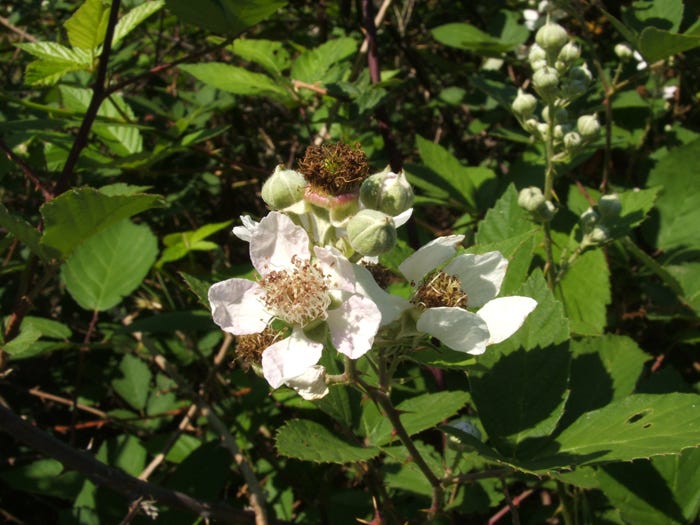
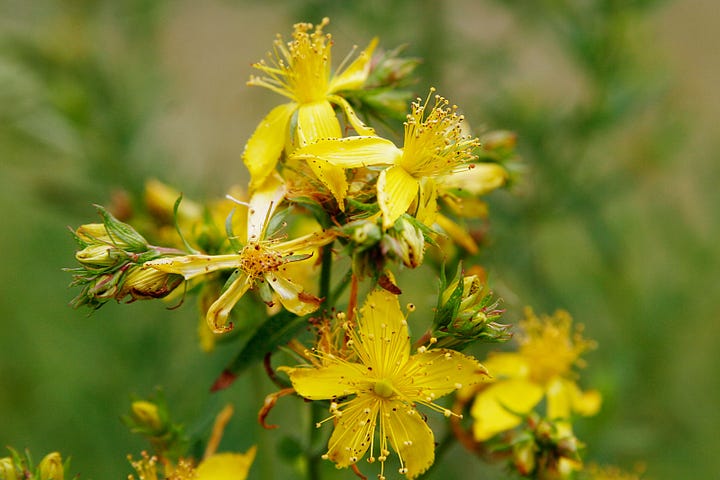
Flora
Bottlebrush (Callistemon) - There are many species of Bottlebrush that are native to the Australian Capital Region. The River Bottlebrush (Callistemon sierberi) started flowering in October with prolific and long-lasting cream or pink flowers that will continue until midsummer while the Crimson Bottlebrush (Callistemon citrinus) starts flowering from early November all the way through to Autumn. The nectar-rich flowers can be licked directly from the blossom or soaked in water for sweet liquid.
Waratahs (Telopea speciosissima) - The red-coloured waratah and state symbol of NSW started flowering in October and will continue for 6 weeks into November.
Blueberry Lily (Dianella revoluta.) - Dianellas are starting to produce blue edible berries. Some species like Dianella longifolia are edible but not necessarily tasty, while Dianella revoluta or Blueberry Lily, produces sweet edible berries.
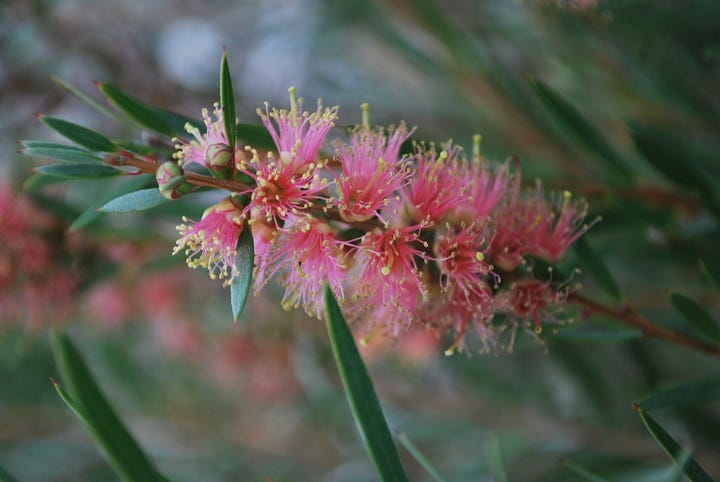
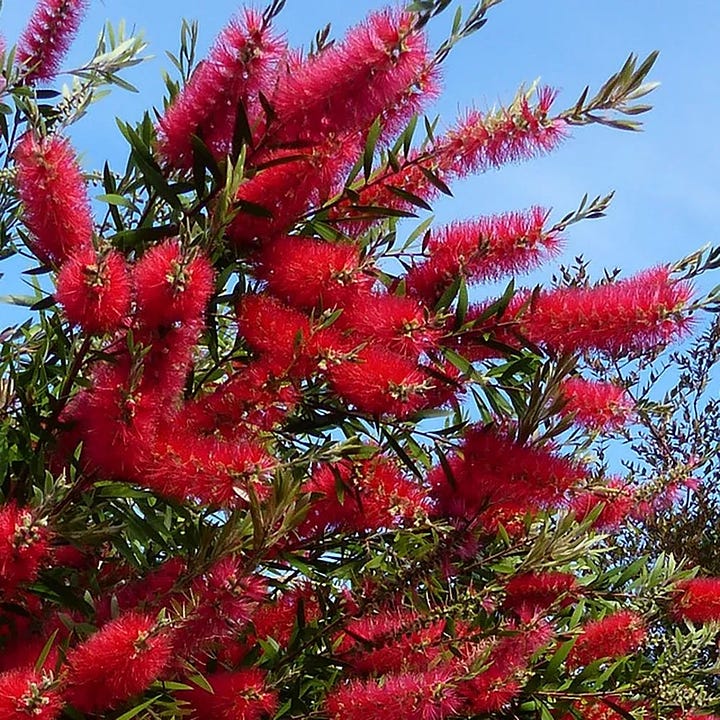
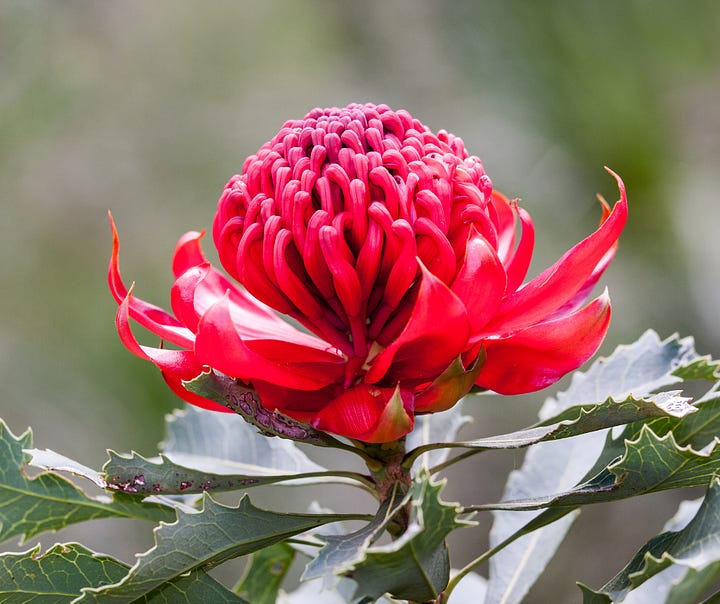
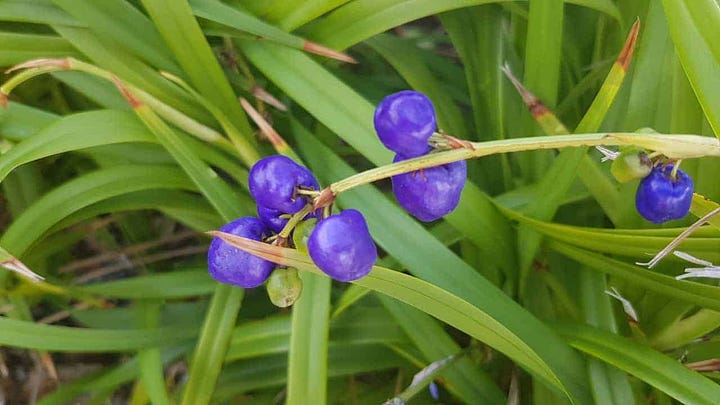
Fauna
Birds - Many birds in the region are looking after fledglings, that will become adult birds over the next month. The magpie swooping season is over much to the relief of many.
Insects - Insect numbers continue to build. Watch out for insect pests on vegetables and fruit. Encourage beneficial insects to your gardens by planting suitable flowers. Flies are becoming more numerous and active. Check for and fix holes in fly screens, and reduce night lighting to prevent insects from coming into the house.
Bogong Moths (Agrotis infusa) - Bogong moths have been making their way to the Australian Alps to aestivate (hibernate over summer) from around NSW, Victoria and Southern Queensland. After breeding through autumn and winter in Queensland’s Darling Downs and the dry inland regions of NSW and Victoria, Bogong moth caterpillars called cutworms, hatch from eggs in late winter to feast on plant stems and leaves. They pupate and emerge from their cocoons as adult moths in early spring and immediately begin to migrate south to reach the Australian Alps in NSW/VIC by around November. As they migrate, the moths feed on nectar, building up their fat reserves for their summer dormancy.
Interestingly, the moths travel at night using the Milky Way to navigate when the skies are clear and electromagnetic navigation when the stars are not visible. Many First Nations groups along Bogong moth ‘songlines’ (migration and dreaming routes) also travel for many kilometres to reach Australia’s Alpine regions where they feast on the fat and protein-rich moths and conduct ceremonies, trade and negotiations. Light pollution, pesticide use and climate change are devastating the Bogong moth population and the wildlife that rely on them as a food source including the Mountain Pigmy Possum (Burramys parvus). Visit the Australian Dark Sky Alliance for information and advice on reducing light pollution.
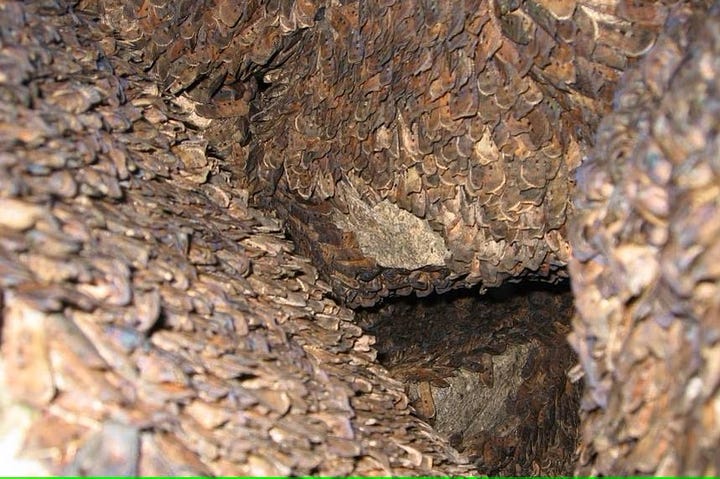
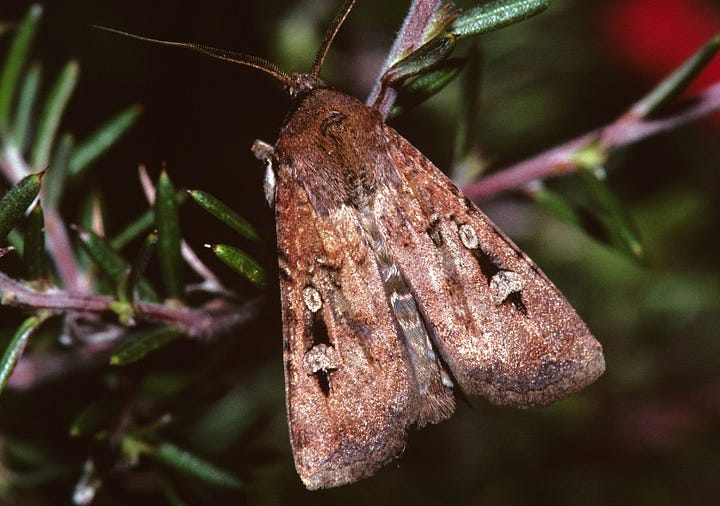
Snakes - Snakes are becoming increasingly active. Keep children and pets away from long grass, ensure you have a snake bite kit handy and the number of your vet in case of snake bitten pets, or call 000 if you or any one you are with is bitten by a snake. Leave snakes alone if they are passing through in rural areas or bushlands. If you see a snake in built up or residential areas, call your local snake handler to relocate the snake. Be sure to keep children and pets away, ensure you keep eyes on it to ensure its location and follow any other instructions from the snake handler. Do not try to kill the snake as all native snakes in NSW are protected under the Biodiversity Conservation Act 2016 and it is illegal to harm them. You are also more likely to get bitten.
In Season - Agricultural Year
The lucerne hay has been harvested and the oaten hay will be harvested by the end of November. Winter grain crops will continue to be harvested until January according to type and weather.
Flowers - Bearded iris and peonies are flowering in early November after the early spring flowers have faded. Roses are at their best this month. Tall spires of foxgloves, delphiniums and hollyhocks begin to flower.
Herbs - Many types of herbs are growing including nettles, parsley, sage, rosemary, thyme, chives, coriander, oregano, chervil, bay, mint etc. and some will be bolting to seed.
Leafy Greens - Spring greens are still in season including purple sprouting broccoli, cabbages, cauliflower, chard, endive, green garlic, lettuces, and sorrel, spring onions start flowering but their leaves can still be harvested, radishes, rhubarb and spinaches.
Vegetables - Artichoke, avocados, peas, carrots
Fruit - Blueberries and strawberries, early season cherries from central western NSW and from Victoria by mid November, grapes, nectarines, peaches, plums, and mangoes from northern Australia


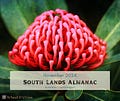


A wealth of information as always!